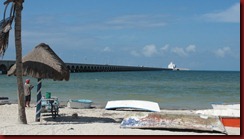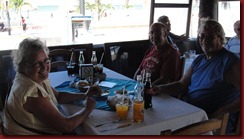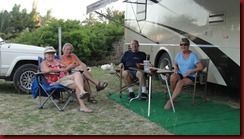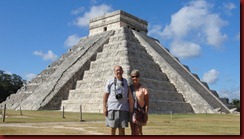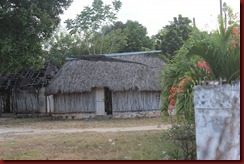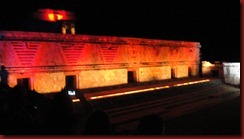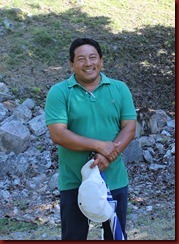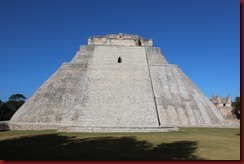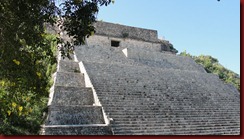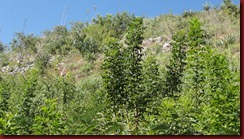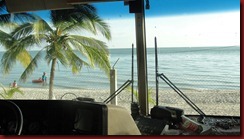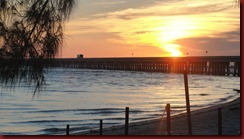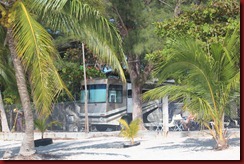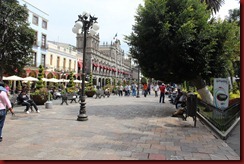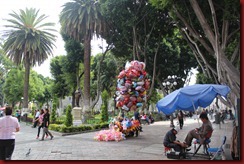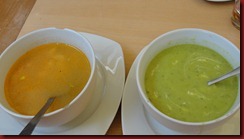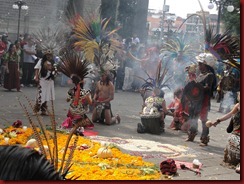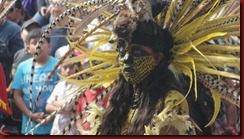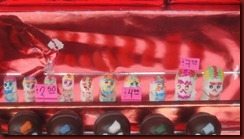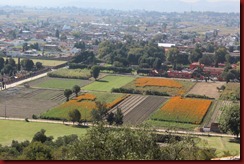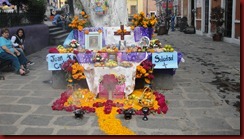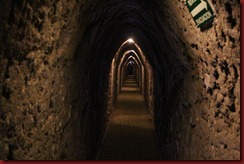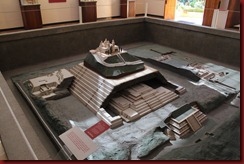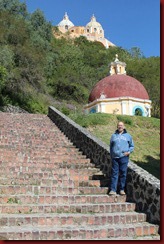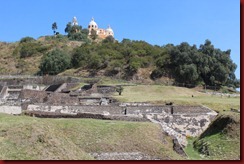Yup, we’re in Cancun, state of Quintana Roo, Mexico, traveling from Chitchen Itza yesterday. Apparently the state of Yucatan, where Merida, Progreso, and Chitchen Itza are located, is well funded. The infrastructure (roads) are excellent by U.S. standards. Also, the number of yachts, some of them very large, at the marinas in Progreso suggest that some of the population is very well off. Yucatan is known for its lack of criminal violence as there seem to be no ties to the drug trade. I’ll try to catch up after being lax in my blogging, but there has been so much going on.
Going back to Progreso, we took a ride to the Malycon in Progreso which is a walkway along the waterfront. Robb and Percilla were with us and we saw a lot of “tourist trap” businesses that thrive at the base of the pier where the cruise ships dock. Did I mention that the pier is now about 5 miles long? I drove by the area the day before and I could see the Carnival cruise ship WAY out there.
Unfortunately, as we walked we were inundated with peddlers wanting to sell just about anything. We went into one of the restaurants and several peddlers accosted us at our table. More of them could see us inside and tried to sell something from the street. We bought nothing and soon returned to the campground.
The weather was very comfortable and the four of us gathered outside the campers in the late afternoon for a soft drink and snacks. They headed out to Chitchen Itza the next morning.
Another day, Helen and I went to the Mayan ruins of Dzibilchatun. You can pronounce it any way you want, but I found that double chin worked for me.
This structure is the “Temple of the Dolls”, called that because archeologists found 5 figures that looked somewhat human, but I saw the picture and I think the archeologists were at sea too long, like the old sailors who saw manatees and thought they were mermaids.
I came away from this site with more of an understanding of the Mayan culture and the Spanish culture that came after it. There was not a lot of restoration here as much of the stones used in the temple were used to make Spanish Missions and churches. The ruins in Merida, a few miles away are almost completely gone as so many churches and cathedrals were constructed by tearing down Mayan temples. Mayan writing can still be seen in the rocks used to construct such buildings. One of the greatest travesties here and at other sites is that the conquerors destroyed the written history of the Mayans. In all the world, there are only three books from the Mayan people and they are spread around museums in Europe.
Next on our travel list is the city of Pisté and the Mayan site of Chitchen Itza, perhaps one of the most famous Mayan cultural centers.
Helen and I in front of the northeast corner of the Great Pyramid. This Mayan city once covered several square miles and housed thousands of people. Interestingly, the upper classes lived in stone buildings while the “peons” lived in wood and thatch buildings. I found this particularly interesting because the same is true today. There are some very fine houses with new Audi or BMW cars out front. However, away from the main street you can find many buildings such as below.
As I was walking around the back streets of Pisté, a young boy of three or so was hanging out the door of one of these thatch and stick homes. He spied me and exclaimed to someone inside “Es Gringo!!” I’m glad I made his day.
In any case, Helen and I had excellent guides for our tours of both ruins. The guide here went into great depth on the scientific and mathematical genius of the ancient Mayans. The Great Pyramid is built with great precision to the seasons and the position of the sun, moon, and stars. They predicted a solar eclipse years in advance and missed by only four minutes. There is so much to tell and so many pictures that it is impossible to capture in a blog. Please, read the book “1491, New Revelations of the Americas Before Columbus” by Charles C. Mann. It will give you a whole new insight on how Europeans took over the New World.
Then it was on to Cancun, and I will cover it next.
Later!
